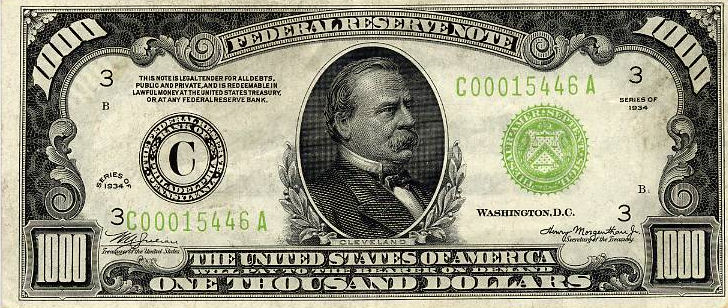
How Many of These Do You Need for Effective SEO?
Uh-Oh!: This post has lots of numbers and is not chatty, fun, or easy to read. It is intended for marketing managers who really want to figure out what to invest in SEO. You can read just the bold text for a quick overview.
My post two weeks ago broached the 80-20 rule in SEO, and it suggested that because so many managers don’t go further than 20% — if they invest at all – pay-for-performance deals can unlock profits for both agency and client. But how are you to know what is the realistic 100% you could invest in SEO, and thus what the 20% would entail? This post will help you to ascertain that 20% by roughly calculating the 100% first.
Of course Sony.com and a 25 page brochure-ware website will each have very different 100%s. So let’s take two different kinds of websites to illustrate the range. One is a consumer ecommerce site selling 50,000 artist supplies (over 50,000 pages) and the other is a 25 page website promoting a civil litigation firm. Vastly different though these websites are, the prioritized list of SEO tasks is very much the same. Some of these SEO tasks require the same amount of time for both websites, and some of the tasks depend on the number of pages.
At the bottom of this post, I give rough time estimates based on DISC’s long history of tracking hours. Assign a monetary value to your team’s time (assuming your team knows what to do, which is a big assumption), or multiply hours by the hourly rate of a prospective SEO firm. DISC hourly rates for SEO are $175, with quantity discounts. Expect an average of $150 per hour on the market now. Rates go as high as $450 per hour. If rates are much less than $125 per hour, someone is getting hurt, probably you. On the other hand, a client may have or get a qualified person on staff, so for the sake of a rule of thumb, let’s put the hourly rate at $75 per hour. Also, remember that the great majority of this work is one-time and lasts for years.
A small site’s maximum is roughly 5500 hours (minimum is 127 hours). 5500 hours x $75 = $412,500 x 20% = $82,500. That may seem huge, but many professional service firm could make that back in one year easily. Below I mention the big effect of cutting video marketing and international marketing.
A large site’s maximum is roughly 56,000 hours (minimum is 254 hours). 56,000 x $75 = $4,200,000 x 20% = $840,000. Again this may seem huge, but consider that this can create tens of millions in sales in the US and much more internationally. If those new, additional sales came to a mere 8.4 million in the first two years, that puts the SEO cost at about 10%, and subsequent years are gravy.
In both cases, cutting international marketing and video marketing (which is as much or more about conversions rather than SEO), brings the 20% in the 80-20 rule to $5900 for the small site and $760,000 for the large site. Cutting the 50,000 product page SEO, and relying mostly on CMS & Database SEO, which can do a substantial amount of SEO automatically, reduces that 20% to about $100,000 for the large site.
In the old days of SEO, say from 1997 through 2005, SEO earned such huge returns when done right (though few knew how to do it right) that one did not need to spend much time calculating the optimum investment. Now it does take some time to make this calculation, but it is doable. Create a spreadsheet with various realistic increases in organic traffic x conversion rates x average gross profit. Consult with an experienced SEO person to learn how much work is needed to reach those increases. Of course DISC offers such services, and while this service here and at other good firms can take a few thousand dollars of time, you end up with a clear vision of the risks and rewards of investments – from 20% to 100% of the maximum – in SEO.
ROUGH SKETCH OF MAXIMUM SEO HOURS FOR A SMALL AND LARGE SITE
The numbers below are a very rough, but a good starting point for the manager considering SEO investments.
Practically speaking, some SEO tasks have no upper limit except what is determined by reaching the point of negative marginal return (that is, each dollar invested in a given SEO task returns less than a dollar in gross profit). This is a case where a good spreadsheet meets a good SEO person. Given gross profit per conversion (or lead tantamount to a conversion), an experienced SEO person can make a safe conservative guess at when negative ROI begins. That then marks the 100%.
I exclude social media marketing and link marketing, even though they are related to SEO (I consider link marketing distinct from SEO, though many lump the two together under SEO).
SEO jobs that take about the same amount of time regardless of the website’s size, content, and target markets:
- SEO Technical Audit & Repairs – 8 to 16 hours, depending on amount of fixes needed.
- Google and Bing Webmaster Services & XML SiteMaps – about 6 hours
- Local SEO and Internet Yellow Pages (IYP) – minimum 4 hours, maximum 20 hours (per physical location)
- Sub-Total – 20 to 48 hours
SEO jobs that take more time depending on the size of the site:
- CMS & Database SEO – small site, 20 hours to 40 hours (The 25 page Brochure-ware site may need only 20 hours for manual application of the rules for all pages); Large ecommerce site, 40 to 80 hours.
- Keyword Research and SEO Copywriting – small site, 20 hours to 80 hours; large site, 20 to 50,000 hours (an hour per page, plus complete keyword research)
- SEO Results Reporting – small site, 12 to 24 hours; large site, 24 to 100 hours in a year (about 4 hours per month)
- SEO’d Video Marketing – small site, 5 hours for SEOing one video to 100 hours for professionally producing and SEO placing over 20; large site, 50 to 500 hours.
- SEO’d Blog Marketing – Small site 50 to 200 hours per year; large site 100 to 400 hours per year.
- International SEO – Minimum of 20 hours for both sites; a huge maximum determined by point of negative marginal returns, but let’s cap at 5000 hours.
- Sub-Totals – small site, 127 to 5,444 hours; large site, 254 to 56,400 hours
- Grand Total hour – small site, 147 to 5,492 hours; large site, 274 to 56,448 hours


